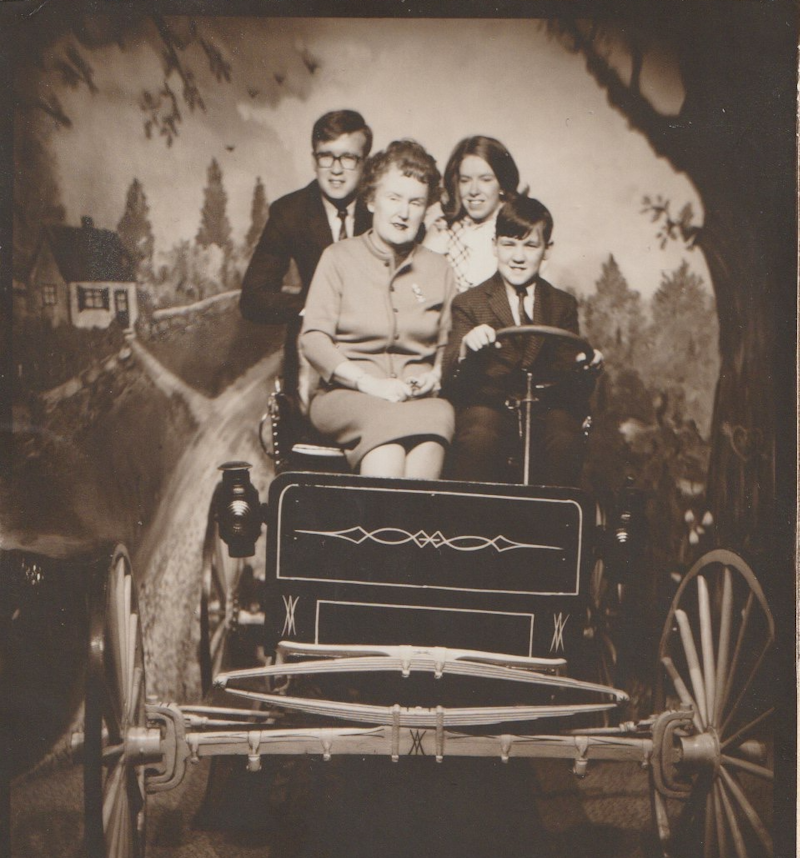I’ve never visited St. Louis, although picking up the Cardinals’ Busch Stadium—which would be #25 on my tote sheet—is an inducement, although less so after receiving a report from my younger son Booker, who was in that city on business last week. He and a colleague were whizzing along on a highway when a tire blew out, and Booker texted me a snap of him changing it in the pouring rain. I asked if he at least had some decent barbeque while there, and he responded that he didn’t—even after pocketing a restaurant recommendation from a native—that his ribs were too sweet and stringy, vastly inferior to what we’ve had together on the outskirts of Houston.
There was a story in The Wall Street Journal last week, “The Real Estate Nightmare Unfolding in Downtown St. Louis,” which was printed when Booker was there, and he said the article was accurate about the real estate market nose-diving, but downplayed the rampant crime in the city whose population has shrunk to 286,578 (latest estimate). That surprised me, although I know little about St. Louis except that Cardinals fans have a reputation for good sportsmanship, which I remember in post-game interviews after the Red Sox swept the Cards in 2004, breaking Boston’s curse, and exacting revenge for a seven-game loss in 1967, when Bob Gibson and Yaz, among others, were in their prime.
I find the term “flyover country” condescending, but as someone who grew up and remained on the East Coast, I’ll admit that not only St. Louis, but Pittsburgh, Cincinnati, Cleveland, Detroit and Milwaukee—all of which have MLB stadiums I’d like to see—are absent from my lifelong travel itinerary. That said, Chicago is tops (aside from NYC) and is still the third largest American city with 2.5 million residents, even as that number, like many “blue” cities, has diminished in the past decade. I’ve been to Chicago, conservatively, 25 times: the accompanying photo with me at the steering wheel for a tourist souvenir at the Museum of Science and Industry was taken decades ago. I was 13 and it was my first airplane flight (aside from a half-hour helicopter ride my dad arranged for my 12th birthday), traveling with Mom to see my brother Jeff and sister-in-law Mary, who lived just outside the city. The museum was very cool (surprising me, since it had “Science” in the name), spending time with Jeff and Mary was great, and Mom, uncharacteristically, sprung for a new striped tie (on sale!) at the famous Chicago-Loop Marshall Field’s department store.
Despite the media’s portrayal of Chicago’s non-stop violence—rape, murder, it’s just a shot away!—I’d gladly go again, take in another game at Wrigley Field, see some old friends, and stop by the Polish, Mexican and steak restaurants that I frequented so often back in the 1980s when my Baltimore City Paper partner Alan Hirsch and I were in business with the Chicago Reader, which bought a majority share of our Washington City Paper in 1982—and traipsed all over the city. Next time, I’ll pass on the white wurst, which tasted as foul as it looked.
We’d met the Reader owners at a newspaper convention in Boston in 1979, and, like the late Jim Larkin and Mike Lacey of New Times, they were generous with advice. The Reader was started on scant borrowed funds in 1971, and was the first “alternative” weekly that was free; it also shunned conventional news, running very long stories on esoteric subjects. The draw for Chicagoans was the classified section and listings of events. As editor Bob Roth explained to me when I bent his ear in Boston, the popular “services” the Reader featured allowed editorial freedom. At City Paper and New York Press, I followed at least part of that philosophy, explaining to writers that since the paper was free, and readers wanted to check out personal ads and weekend events, perhaps they’d get to the editorial content.
It turned out we all liked each other a lot, hence all the visits, even when Alan and I had topped the hurdle of profitability: Roth, Tom Rehwaldt and Tom Yoder were gregarious hosts in Chicago, and we got a boot out of the eccentricities of those three. Roth, the paper’s frontman, was inscrutable, Chicago’s Sphinx; Rehwaldt was the business guy, the only one to regularly wear a suit, aside from when he was at a concert; and Yoder the Operations Manager, a fellow with more outward energy, and jokes, than the other two put together. When I think of Chicago, the first image is of the Coca-Cola billboard on the way to the city from O’Hare (the airport I once considered the worst in the country, but now Atlanta, Dallas and Seattle have it beat); I love billboards and that particular one just reeked of promise and excitement.
Take a look at the clues to figure out the year: Pete Best wins a defamation suit against The Beatles; Lulu marries Maurice Gibb; Ken Loach’s film Kes is released at the London Film Festival; Dominic West is born and Boris Karloff dies; in a terrific pop music year, the Archies score big with the unlistenable “Sugar, Sugar”; Elliott Smith is born and Jeffrey Hunter dies; MLB expands to 24 teams, adding the Seattle Pilots, Kansas City Royals, San Diego Padres and Montreal Expos; Philip K. Dick’s Ubik and John Fowles’ The French Lieutenant’s Woman are published; and the Delfonics release Sound of Sexy Soul.
—Follow Russ Smith on Twitter: @MUGGER2023

